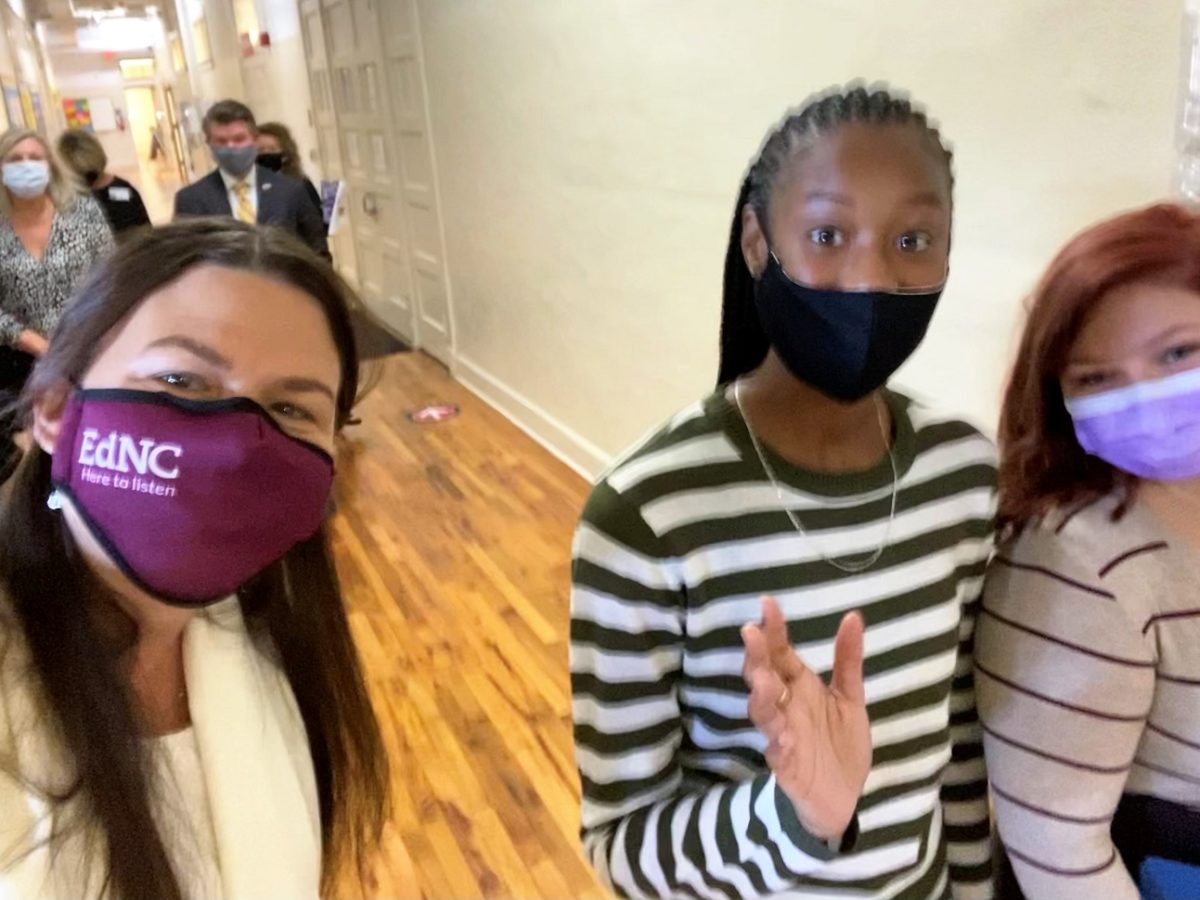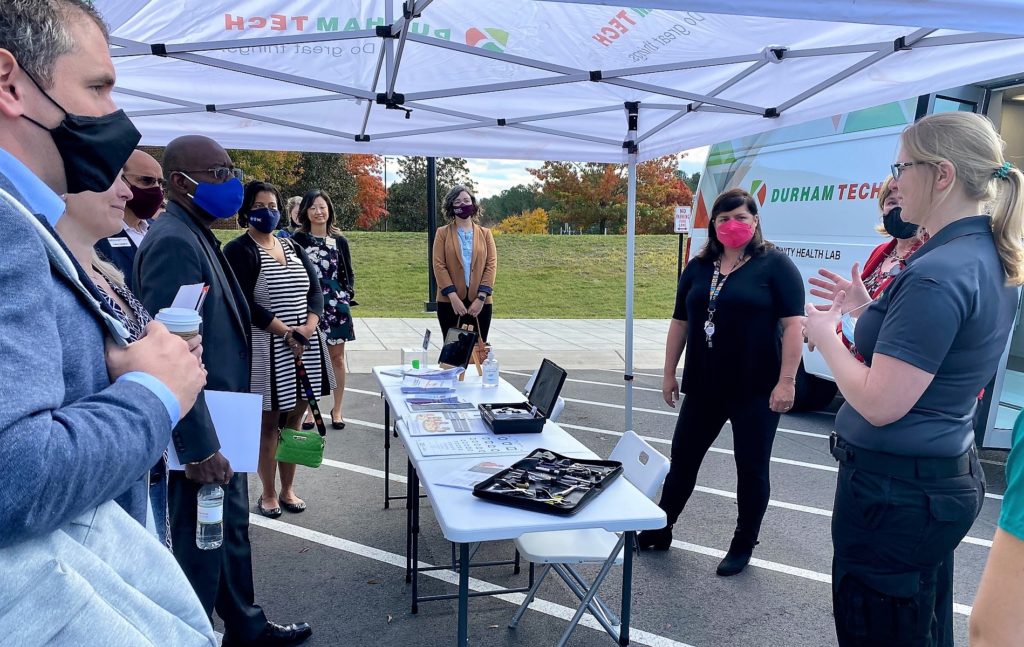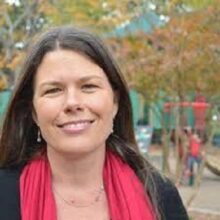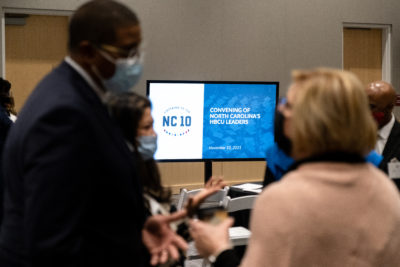
|
|
I thought nothing could top what we saw last year in the earlier days of the pandemic.
And then Delta hit, and out of the blue, the ordinary-ish start of school we all had hoped for became anything but that.
Day in and day out, educators are having to play multiple roles, from driving school buses to serving in the cafeteria, because of staff shortages. They are facing a trifecta of fear – fear of the virus, fear of school violence, and fear of citizens who are compromising our constitutional right to free speech with violence threatened and real. Their students come to class as the whole child they are with nutritional, health, mental health, and other needs that need tending to. Teaching requires making up for the lost instructional time on top of providing personalized learning opportunities for the students in person and out on quarantine.
And that is all on top of the pandemic wreaking havoc on the lives of our educators.
I know a story of a principal who sat locked in the office with two students and two loaded guns deescalating the situation on her own to avoid potential harm to others while waiting for the police department to arrive.
I know a story of a school who cares for a student ostracized from family and living in a plywood shed with no water or electricity. They figured out how to get the student access to the internet.
I know a story of an eleventh grade student who took on the role of band director when the beloved director died of COVID.
Recently, a parent educator told me the pandemic has pushed families too hard — and then he took his fist and pounded it into the palm of his hand.
In a book on “Everyday Holiness,” in a chapter on the soul trait of faith, it says, “The expansive, impressive experience of awe is part of everyday life. … Awe is there to be had in any moment.”
From the beginning of EdNC, we have said that our offices are your schools and community colleges, your communities and your lives. But as education news becomes more and more local, it is not enough.
“The journalism of listening and seeing well requires time,” said Pope Francis recently. “We need journalists who are willing to ‘wear out the soles of their shoes’, to get out of the newsroom, to walk around the city, to meet people, to assess the situations in which we live in our time.”
We need more people and philanthropists and policymakers — even if they never visit a classroom — to be able to bear witness to your stories that inspire awe, strengthening public will and prompting action on behalf of our public schools.
It is time for EdNC to broaden and deepen our reach in all 100 counties. We need to build our capacity to cover local education news that matters to you. We need to be able to distribute our news and stories county by county.
Here’s why EdNC is visiting all 100 counties this school year
Last year, an external, independent review of our work funded by the Oak Foundation found, “With a significant distance between the education system’s political governance and actual events and activities in our schools, EdNC’s work is critical in helping education stakeholders and the public better understand the various and sometimes complicated issues impacting children’s learning and instruction. Their work helps fill the information gap between the capital and the classroom, and encourages engagement and conversation among those with an interest in education.”
We then contacted Philip Smith, the CEO of the Journalism Growth Lab, to assess our reach.
He said, “As part of our work with EdNC, we were seeking to understand how well the EdNC brand has reached the market in NC already. Over the course of several weeks — while running campaigns on LinkedIN, Facebook, and Instagram — we were able to observe that EdNC has already reached a critical mass of decisionmakers in their market. The campaigns we ran aimed to reach key influencers in the education space — teachers and policymakers, as well as parents — and the results signaled to us that many of those people were already receiving updates from EdNC on a daily or weekly basis.”
Over the last six years, we have permeated the audience of influencers across North Carolina by sending out more than 245,000 emails weekly to every teacher, every principal, every superintendent, all the school board members and county commissioners, lobbyists, and legislators.
The challenge ahead is to keep reaching the audience of influencers and increase how often they come to the website while we build capacity to create local education news and stories for local audiences.
Our plan to broaden and deepen our statewide reach was designed with intention and attention to populations historically marginalized, subjected to discrimination, or excluded from full participation in society. In 2020, 17% of perspectives published on EdNC were from diverse authors, and this strategy will help us more than double that.
We started by creating a database of information about each county across 50 data points.
Then we surveyed local influencers to determine where they get information, who influences the distribution of information, and how they share information locally. More than 800 of you have already responded to our survey.
The survey is helping us identify three to five traditional and nontraditional influencers in each county for one-on-one interviews, focus groups, or listening sessions.
Our team will then follow up with visits to each and every county. We’ve already been to 40 of the 100.
We coded and built a tracker that allows us to see reach county by county.
At the end of this year, our 100-county information assessment will inform not just our work to provide local education news and stories to local audiences, but we will also be sharing our work with partners and philanthropists statewide.

You may see Nation Hahn on our team out and about the state visiting all 100 counties with the leadership team at Blue Cross and Blue Shield of North Carolina. They have been to 14 counties already, and you can follow the progress of the “Extra Miles Tour” here. Tunde Sotunde, the president and CEO of Blue Cross NC, says, “We are building relationships that will help us better serve our state.”
You may meet a new member of our team, Katie Dukes, who is circling back to those counties and doing in-depth policy research as issues are surfaced. First up is our students who have lost caregivers to COVID-19 and the role our schools are playing in supporting them.
You may run into the rest of us in coffee shops on your Main Street looking for people and stories that inspire awe.
Going forward, Caroline Parker will serve as director of rural storytelling, and each member of our team will serve as an ambassador to a cohort of counties continuing to deepen our relationships across the state and keep a pulse on local issues. Reporters in the east and west will support our storytelling.
Like this short documentary about Clinton.
You can find our 100-county content here. In three years, our goal is to have built deep engagement in all 100 counties.
Here is how we are orienting our team towards our goals:
The book on “Everyday Holiness” reminds us that we can pull back the diaphanous curtain that stands between us and awe “by an experience, or equally by an instance of will.”
We believe our approach to this statewide information assessment is the only county-by-county strategic initiative to move information happening in the U.S. We also believe our approach is the first to replicate the BBC’s local news partnerships here in the U.S.
Thank you to our funders, including the Next Gen Advisory Board of the Belk Foundation, the SECU Foundation, and the Oak Foundation for investing in capacity building.
Between now and when we see you, thank you for your leadership and public service to our students, our state, and our future.



